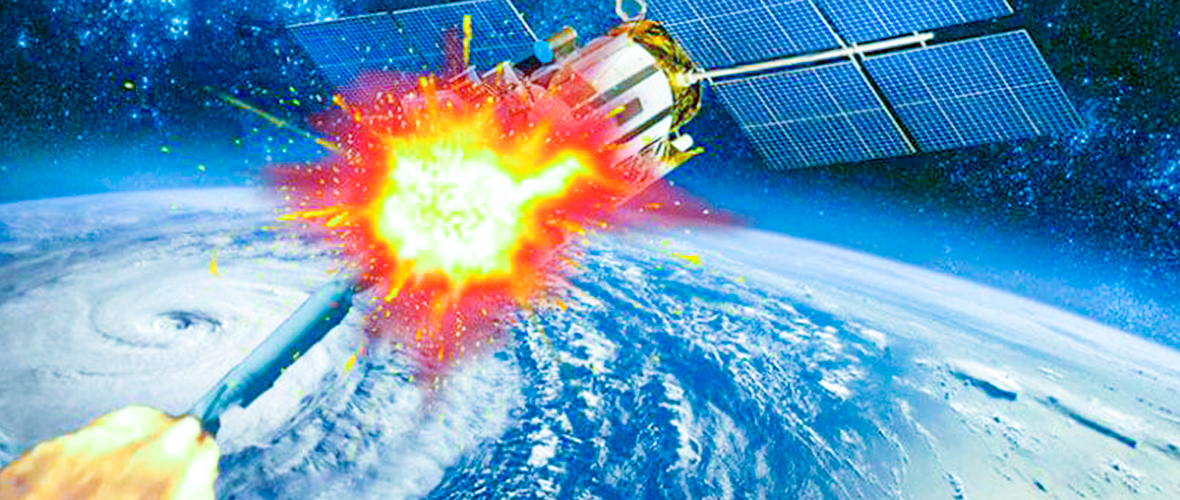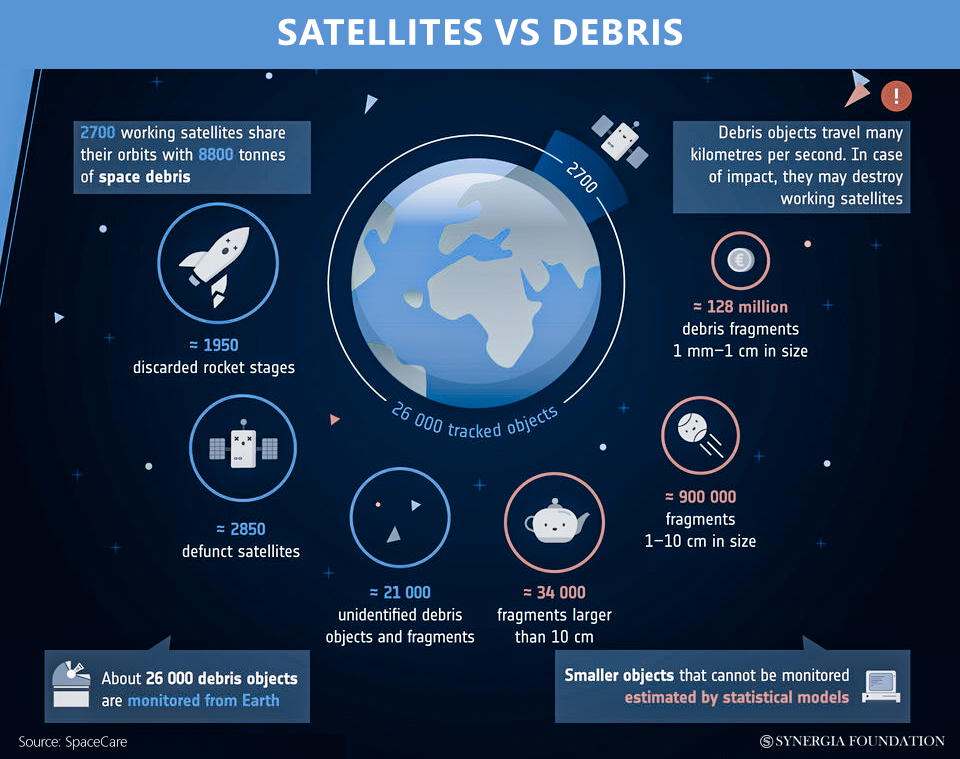Decluttering Space
December 18, 2021 | Expert Insights

On the 15th of November, 2021, the Russian Ministry of Defence launched an anti-satellite missile (ASAT) at one of its satellites, resulting in a cloud of space debris. This drew international attention, with many countries, including the U.S., condemning the test. Dialogues about the sustainability of Near-Earth Space (NES) and the impact that space debris can have on the future of space exploration have garnered renewed attention in light of this incident.
Background
Anti-satellite missiles (ASAT) are weapons that are designed to destroy satellites. Till date, these weapons have not been used in warfare; however, four countries (India, Russia, China, and the U.S.) have successfully launched ASAT at their satellites to prove their capability. In 2020, Russia had launched two such missiles. However, the one that it launched now is different, as it is the country’s first official intercept with its current ASAT system. Known as direct kinetic anti-satellite weapons, these are launched from the ground, directly hitting satellites at high speeds.
Russia chose to hit a defunct Soviet satellite known as Cosmos 1408. This is a reasonably large satellite (1750 kgs), creating a lot of space debris. According to Jonathan McDowell - an astrophysicist and satellite tracker, there was no reason for them to hit such a big target.

Analysis
Today space is more crowded than ever. Since the start of the space age, it has become increasingly littered with artificial objects like rocket boosters, dead satellites, and other pieces of hardware. Space debris has been piling up so fast in the last two decades that it is becoming a direct threat to space exploration and the general sustainability of NES.
The irony of space travel is that the more we go into space, the more likely it is that we will stop ourselves from going back. We are creating a prison around Earth, and it could potentially trap us for years. This prison comprises millions of pieces of debris circling around Earth at extremely high speeds. A typical shuttle flight has a 1-in-250 chance of getting into a catastrophic collision with orbital debris, and if 100 missions like this happen, the chances increase to 33%.
At present, the satellite destroyed by the Russian missile has produced thousands of pieces of debris that will linger in the Earth’s orbit for years, and it could potentially hit other satellites or even the International Space Station. In fact, when the ASAT was launched by Russia, the space crew was asked to take shelter as they passed a debris cloud. Unsurprisingly, the U.S. condemned this test as ‘reckless’, stressing that it endangered not just the five astronauts on the International Space Station but also the two Russian cosmonauts, one of whom, Colonel Anton Shkaplerov, is currently the station’s commander. This test alone would increase the total number of trackable pieces of space debris by 10%.
Larger pieces of debris are easier to track and avoid, but even small pieces (under 4 inches) are dangerous as they travel around 17,000 miles per hour. At that speed, they can destroy satellites and spaceships they collide with. This issue of space debris matters to everyone on Earth, as it can affect satellites which play an essential role in the global economy through the global positioning system (GPS), weather data, communications, etc. If all these services were to go down, the economic consequences would be dire. In fact, one study has found that a GPS outage can cost the U.S. up to $1 billion a year.
Even though space debris impacts everyone, countries continue to undertake ASAT tests. A crucial reason is a perceived need to bolster missile defences. If a country can destroy a satellite with a missile launched from Earth, as the Russians have done, it shows that they can destroy a ballistic missile when it is above the atmosphere.
As far as the U.S. is concerned, it is very keen on accessing space, whether it is for military or non-military purposes. As a result, it has a significant interest in creating and leading norms on how countries should act in space. Along with other like-minded states, it should propose and pursue a ban on any intentional debris-creating actions in space, including ASAT tests. Several governments and international organizations have already suggested ways to prevent new debris. However, the technology required to remove space debris has not been fully developed, and many worry that this technology itself can be used for attacking satellites.
Counterpoint
While the regulation of space debris remains, there has been growing international recognition around this issue. Indeed, a consortium of private companies has created the ‘net-zero space charter’ to reduce debris. Moreover, the U.S. Space Force is leading a new debris-focused technology project called the ‘Orbital Prime.
Other countries have also realized the importance of tackling this issue. For instance, India and Japan have been working together on the issue of space debris since 2019.
Assessment
- Unless the problem of space debris is addressed, we will be creating a prison around Earth, which prevents space exploration from taking place in the future.
- In a world that is highly dependent on technology, collisions that destroy satellites will have significant economic and social consequences.








Comments